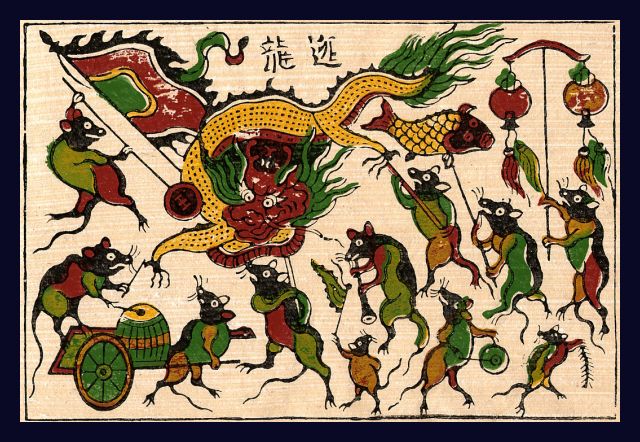 |
| Dong Ho folk painting. Photo:Internet |
Folk painting is believed to bring purchasers good luck and prosperity. There are two types of Vietnamese folk paintings, Tet holiday paintings and worshiping paintings. The folk painting’s journey is the story of the Vietnamese traditional art from the past to the present. During the Ly Dynasty (12th century), there were many families who specialized in woodblock carving. By the end of the Tran Dynasty, they were also printing paper money. At the beginning of the Le So Dynasty, the Chinese technique of carving printing boards was adopted and improved. The History Museum and the Fine Art Museum in Hanoi still keep old printing boards as archives.
Each style of painting is different. However, in all the styles, shapes are created based on the concept of don tuyen binh do (single line-simple designs) which uses lines to bend the colored shapes and to make a border for the picture. Another method used is thuan tay hay mat (easy to draw and to see). With this design form, the folk painting does not depend on the rules of perspective
The most long-standing and popular are Dong Ho woodblocks and Hang Trong and Kim Hoang paintings from the northern province of Bac Ninh and Hanoi, and Nam Hoanh and Sinh village paintings from Nghe An and Thua Thien- Hue provinces in the central region.
Dong Ho woodblocks
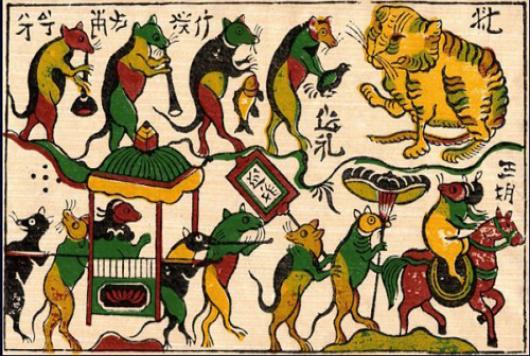 |
Dong Ho woodblocks, originating from Dong Ho village in Bac Ninh province, are simple and rustic and are thus usually preferred by working people and those in the countryside.
Dong Ho painting or Dong Ho folk woodcut painting is a genre of Vietnamese folk paining, stemming from Dong Ho village ( Dong Ho commune, Thuan Thanh district, Bac Ninh province). A long time ago, Dong Ho painting used to be a precious decoration to celebrate Tet Holiday; Vietnamese people bought Dong Ho pictures to hang them on their wall for a year, and then replaced them by new ones when a new year was coming. The paper is made of bark of tree named “do” and powder of seashells and glutinous rice whilst colors of paint used in Dong Ho pictures are processed from various kinds of natural materials easily found in Vietnamese villages. While seashells bring a sparkling white background, glutinous rice makes the paper more supple and able to conserve colors for a long time. The black color is taken from ash of burned bamboo leaves; the red is from red gravel; the yellow is from flowers. All colors are so striking and lively that you seem to see the whole Vietnamese villages through each line, each color block.
Hang Trong paintings
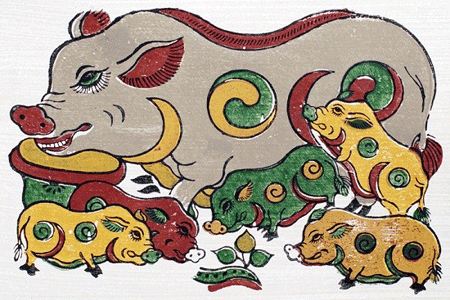 |
Hang Trong paintings are also printed with black lines to form the basis for the colour. But, unlike Dong Ho paintings, they are made by hand. Large sheets of imported paper and brightly coloured paints are used for Hang Trong paintings. The content of these paintings are very much influenced by Chinese drawings.
Hang Trong paintings are popular as worshipping paintings in temples. As such, the paintings are often hung in spacious living rooms or in holy places.
Hang Trong paintings are also printed with black lines to form the basis for the color. However, unlike Dong Ho paintings, they are made by hand. Large sheets of imported paper and brightly colored paints are used for Hang Trong paintings. The content of these paintings are significantly influenced by Chinese drawings. Hang Trong paintings have traditionally served the poorer classes and are made and sold in the capital city.
Kim Hoang paintings
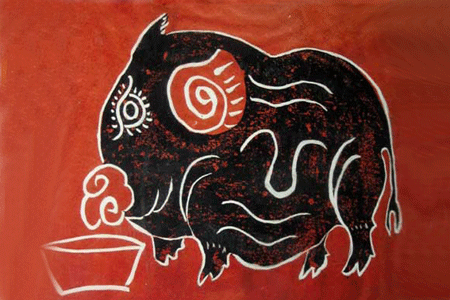 |
Sinh Village Paintings
The colours are applied in rough, but flexible lines. Sometimes, the paintings are reprinted to create clear line. Sinh Village Paintings, which come from Sinh Village, a suburb of Hue City, are well-known in the central region of Viet Nam. Most Sinh Village paintings are used for worship, and they express the mystical, nature-based beliefs of the ancient Vietnamese.
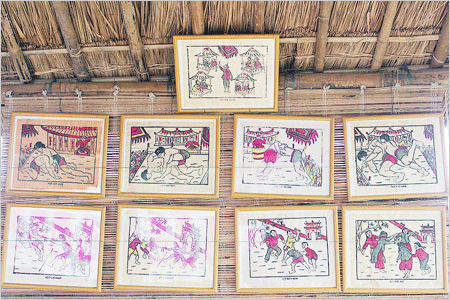 |
Among these pictures is the Tuong Ba (Statue of the Lady) painting, the guardian angel of women. Sinh paintings are made using just one printing-board to create the drawing lines and black shapes. After being printed in black, the work is sometimes completed with embellishments made with colourful lines. Some paintings are still printed on rustic paper.
To conclude, folk paintings are a combination of traditional cultural values with ancient artistic methods that have been created through the labour of past generations. There are two types of Vietnamese folk paintings, Tet (Lunar New Year Festival) paintings and worshipping paintings.








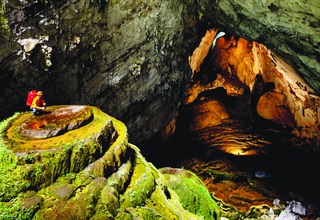





COMMENTS